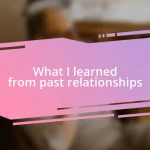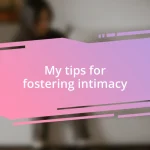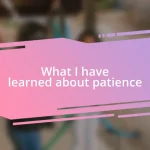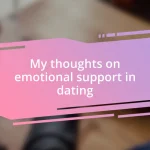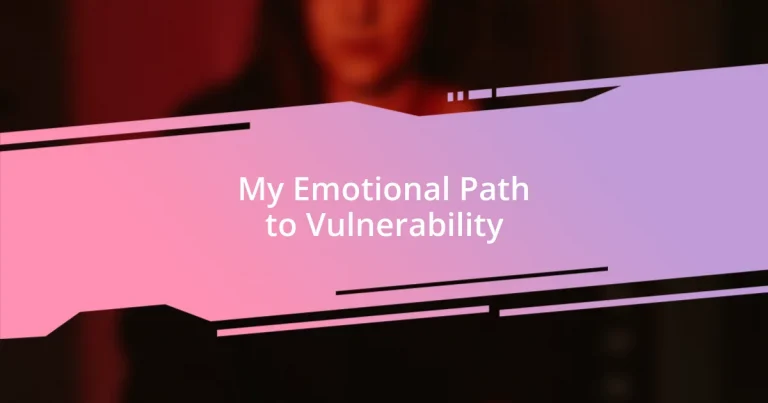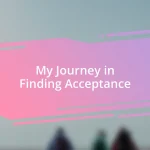Key takeaways:
- Embracing emotional vulnerability fosters deeper connections and understanding, transforming perceived weaknesses into strengths.
- Recognizing and overcoming personal barriers, such as self-criticism and fear of judgment, is essential for authentic communication and support.
- Building resilience through shared vulnerabilities allows individuals to adapt and grow, enhancing relationships and forming a supportive community.
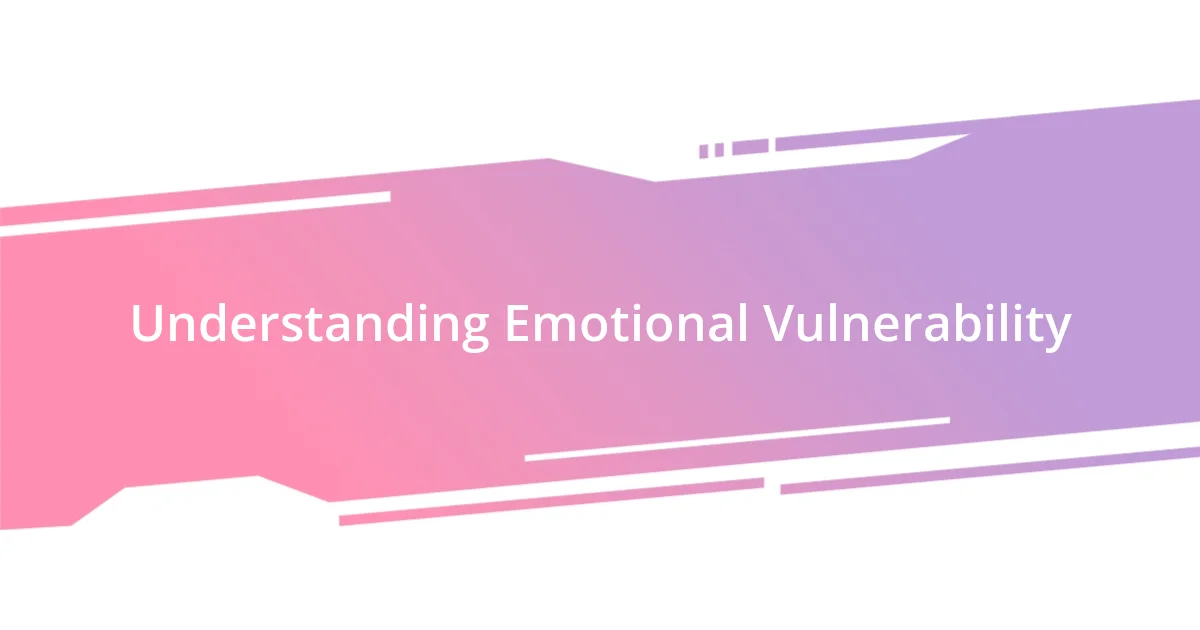
Understanding Emotional Vulnerability
Emotional vulnerability is often perceived as a weakness, but in my experience, it embodies the courage to express our true selves. I remember feeling terrified the first time I openly shared my struggles with anxiety. That moment revealed not only my fears but also the genuine connection it fostered with others who felt the same way.
When I think about vulnerability, I ask myself, what would it be like to fully embrace my emotions without the fear of judgment? Allowing myself to be vulnerable opened doors I didn’t know existed, leading to deeper relationships and a better understanding of my emotional landscape. It was a bit like peeling back layers of an onion; each layer brought tears, but also clarity.
I’ve learned that acknowledging our vulnerabilities is the first step towards healing and growth. In one of my toughest moments, sharing my feelings with a close friend lifted a weight off my shoulders, showing me that vulnerability can lead to unexpected support and connection. Have you ever allowed yourself to be vulnerable? I find that doing so can transform not only how we view ourselves but also how we relate to those around us.
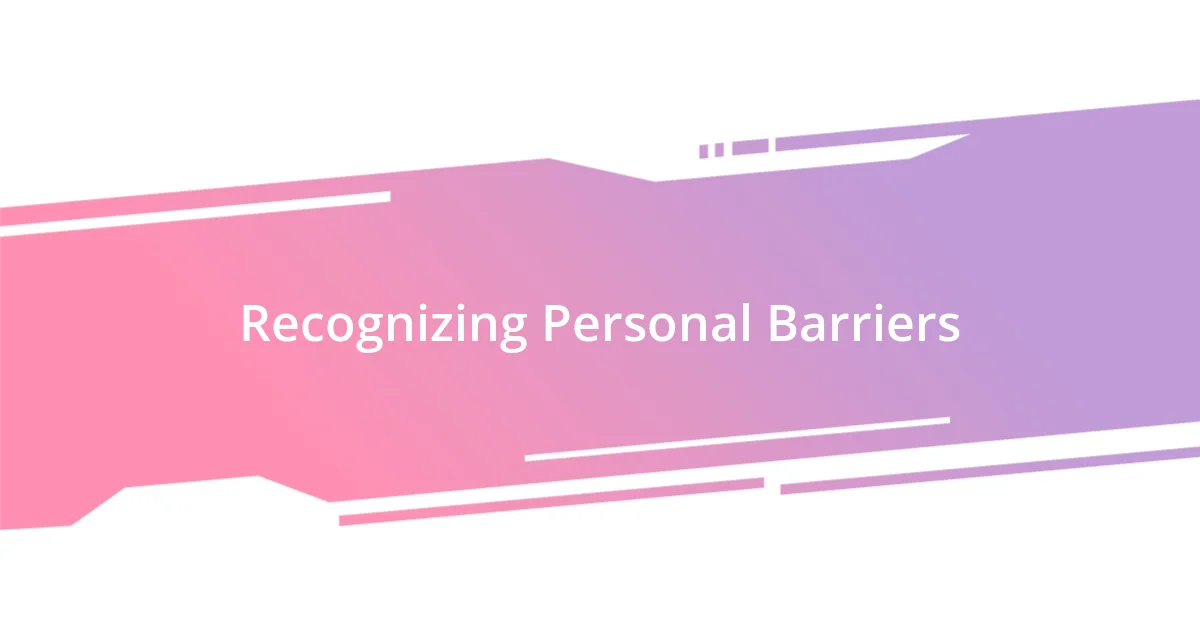
Recognizing Personal Barriers
Recognizing our personal barriers is an essential step toward embracing vulnerability. I often found that self-criticism was a significant wall I had built around myself. When I began to observe those critical thoughts, it became clear that they were hindering my ability to connect. Rather than embracing openness, I would retreat into my own insecurities, convincing myself that sharing my feelings was better left unspoken.
Thinking back to a time when I tried to express a particularly deep-rooted fear, I noticed how my habit of overthinking created barriers. I’d rehearse in my mind how the conversation might go, only to realize later that those imagined outcomes rarely reflected reality. This realization prompted me to challenge those self-imposed scripts, allowing room for genuine dialogue. It was liberating, really—I started feeling lighter after each honest exchange.
Sometimes, I realize that past experiences can also act as personal barriers, anchoring us in old narratives. I remember struggling with the fear of judgement, stemming from previous interactions where being vulnerable had backfired. However, recognizing that these were just experiences—and not predictions—helped me reclaim my voice. It’s a process, but understanding these barriers allows us to dismantle them little by little.
| Barrier Type | Description |
|---|---|
| Self-Criticism | Negative self-talk that prevents openness. |
| Overthinking | Distracting thoughts that hinder genuine expression. |
| Fear of Judgment | Concerns about how others perceive your vulnerability. |
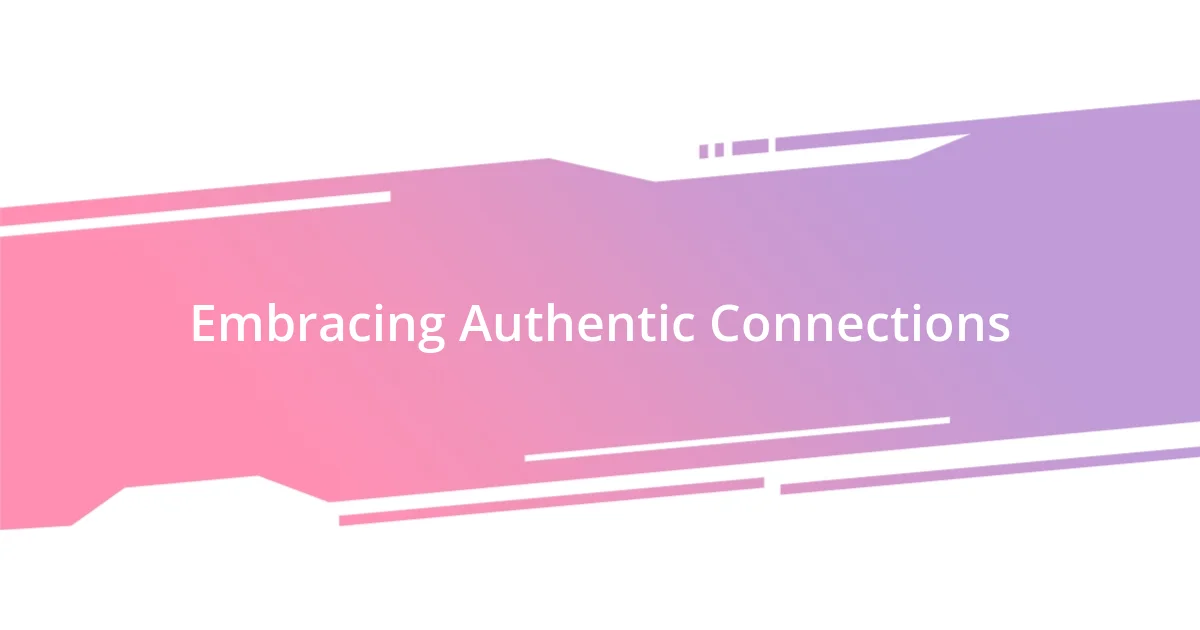
Embracing Authentic Connections
Connecting authentically requires us to step outside our comfort zones and share our true selves. I vividly recall a moment when I decided to open up about my career struggles with a colleague I had only formally known. To my surprise, she shared her own hardships, and in that instant, we forged a bond that transformed our work environment into a supportive community. It was a reminder of how our shared vulnerabilities can unite us, creating a safe space for openness and trust.
Building authentic connections has its benefits, but it can also feel daunting. Here’s what I’ve observed about the power of these connections:
- Mutual Understanding: Sharing experiences fosters empathy, making it easier to relate to one another.
- Safety in Vulnerability: When we are open, it encourages others to be as well, creating a ripple effect of authenticity.
- Deeper Relationships: Authentic connections lead to discussions that go beyond surface-level interactions, enriching our lives.
- Emotional Support: Knowing someone understands your struggles can ease burdens and make them feel lighter, creating a sense of belonging.
As I look back on my journey, I realize that vulnerability isn’t just about disclosing struggles; it’s about inviting others into our emotional world. I remember feeling a profound sense of relief when a close friend confided in me during a tough time. Our conversation didn’t just strengthen our bond—it helped both of us navigate our experiences together. There’s something truly uplifting about recognizing that we aren’t alone, and that’s where genuine connections thrive.
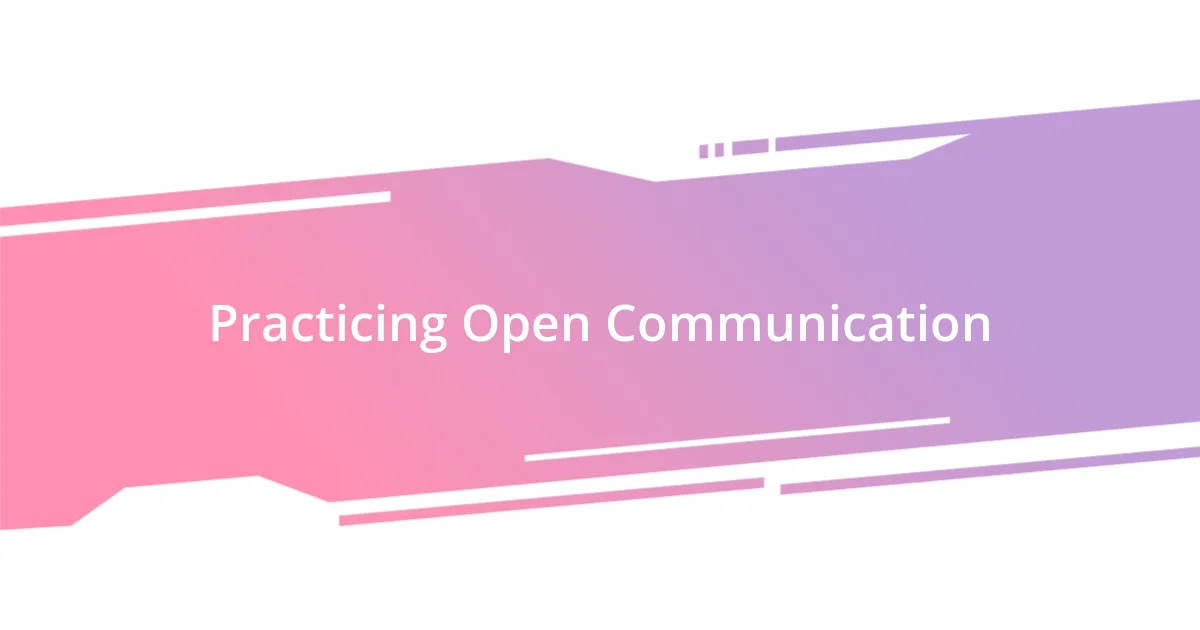
Practicing Open Communication
Practicing open communication is like a dance—sometimes awkward but incredibly rewarding. I remember a time when I decided to have a heart-to-heart with a close friend about my disappointments. I was terrified, thinking she’d dismiss my feelings or, worse, pity me. But when I finally opened up, her response was not only understanding but also incredibly validating. Have you ever felt that wave of relief wash over you when someone acknowledges your struggles? It’s a powerful reminder that we’re not alone.
In my experience, the key to fostering open communication is vulnerability paired with honesty. I’ll never forget a conversation where I admitted my struggle with anxiety during a particularly stressful project. The moment I shared my feelings, my coworker began to share her experiences too. It struck me how quickly walls crumbled when we’re willing to be real with one another. Isn’t it amazing how a simple act of sharing can ignite the spark of connection? When we allow ourselves that space, we often find that others are waiting to step in and share their truths.
I’ve learned that open communication isn’t just about expressing feelings; it’s about creating a safe environment for both parties. One time, while facilitating a team meeting, I encouraged everyone to share not just projects but also their emotional well-being. Initially met with apprehension, the atmosphere shifted as colleagues began to share their hidden challenges. It was enlightening to witness how openness can foster a sense of community. Don’t you think we all deserve spaces where we can express our fears and aspirations? Creating that culture is a journey well worth taking.
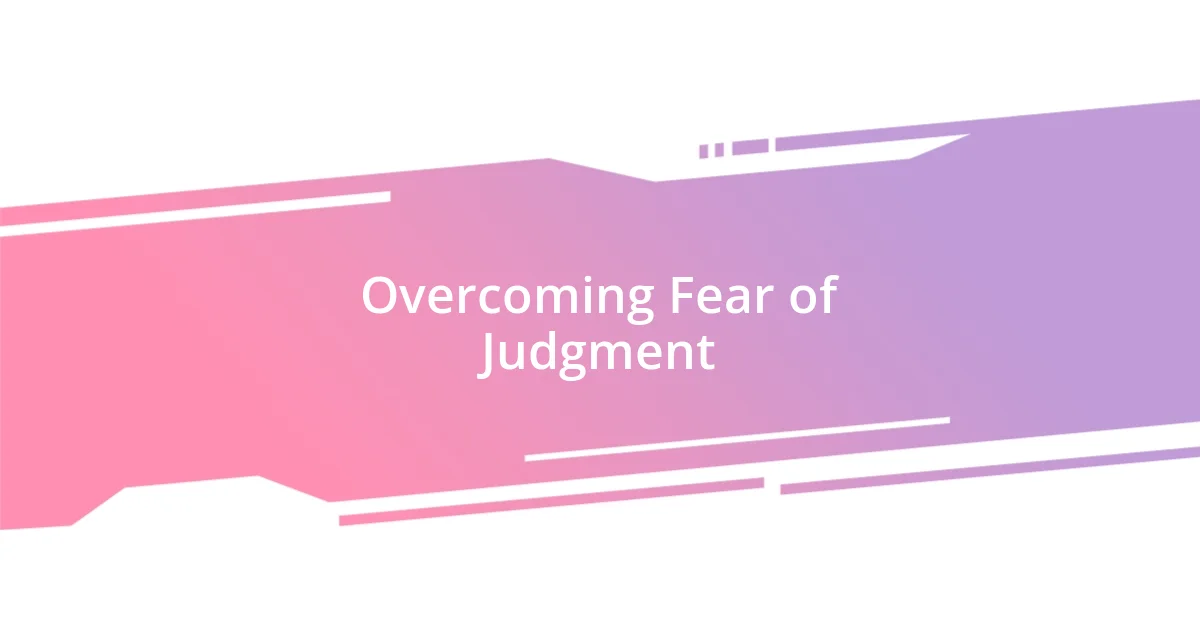
Overcoming Fear of Judgment
Overcoming the fear of judgment is a battle that many of us face, and I can certainly relate. I remember standing in front of a group of peers, prepared to share my ideas for a project. My heart raced, convinced they would mock me for any misstep. As I spoke, I noticed nods of encouragement rather than judgment, and that single moment shifted my perspective. Have you ever realized how our fears are often worse than reality?
Sometimes, I found the fear of judgment stems from past experiences where vulnerability resulted in criticism. I had a close friend who, after opening up about her mental health struggles, was met with harsh comments from some circles. It devastated her trust, yet she later utilized that pain to empower others by sharing her story on social media. Isn’t it incredible how vulnerability can serve as a beacon of courage?
As I navigate through moments of self-doubt, I remind myself that everyone has their own insecurities. I once chatted with a mentor who shared his fear of public speaking, something I had assumed he had mastered. It dawned on me that embracing our imperfections can actually strengthen our connections. Why do we let the idea of judgment hold us back when we all have our unseen battles? The truth is, acknowledging our vulnerabilities can transform them into strengths, making us more relatable and human.
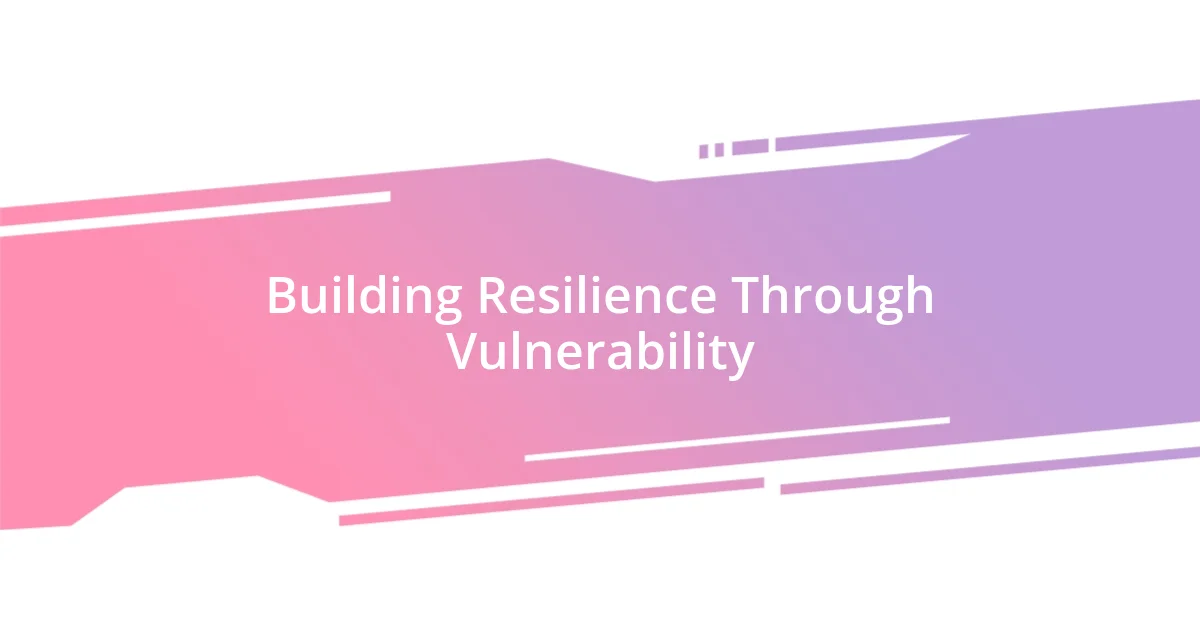
Building Resilience Through Vulnerability
Building resilience through vulnerability is often a transformative experience. I remember a challenging period in my life when I chose to share my story of failure with a support group. In that moment, I felt exposed and unsure, yet the relief I felt afterward was profound. When others began to share their own struggles, it created a tapestry of support that made us all stronger. Isn’t it interesting how our shared vulnerabilities allow us to build resilience together?
In another instance, I faced a setback at work that left me feeling defeated. Instead of retreating into silence, I opened up to my manager about my frustrations. To my surprise, he not only offered encouragement but also shared his own setbacks. That candid exchange reminded me that resilience is often built through shared experiences. Have you ever noticed how vulnerability can serve as a bridge, connecting us in our shared humanity?
Vulnerability doesn’t just create connections; it also enhances our ability to adapt and bounce back from adversity. I vividly recall a time when I lost a major client and felt my confidence plummet. Rather than hiding my defeat, I reached out to colleagues for advice and support. Their insights helped me regain my footing, reinforcing the notion that vulnerability can breed collaboration. How can we harness our experiences of vulnerability to create an even stronger support network? When we embrace our imperfections, we cultivate a resilience that elevates not just ourselves, but also those around us.
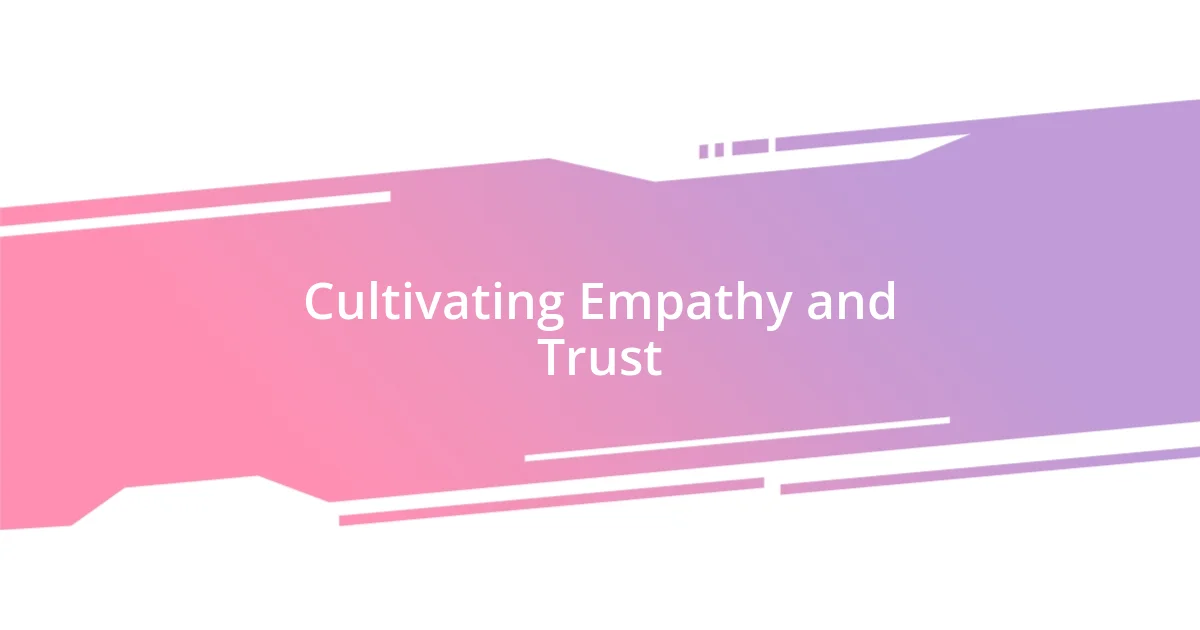
Cultivating Empathy and Trust
Cultivating empathy and trust is fundamental in our emotional journeys. I remember the first time I truly listened to a friend’s struggle without offering advice or judgment. I sat quietly as she shared her burdens, and in doing so, we forged an unspoken bond that brought us closer. Have you ever felt the shift that happens when someone feels truly heard?
Trust doesn’t build overnight; it’s nurtured through consistent understanding and connection. In my experience, I discovered that sharing small vulnerabilities, like my fear of failure in a new role, encouraged others to open up too. This reciprocity can be magical; it’s like creating a trust bank where each shared experience adds to our balance. How often do we underestimate the power of simple honesty in fostering relationships?
Another memorable moment was when I apologized to a colleague for a misunderstanding. Instead of defensiveness, I found openness in her response. She shared her feelings, and it felt as if we peeled back layers that had kept us apart. It taught me that cultivating empathy begins with vulnerability, even in small doses. Isn’t it fascinating how a single moment of honesty can ripple out, strengthening the ties that bind us?





